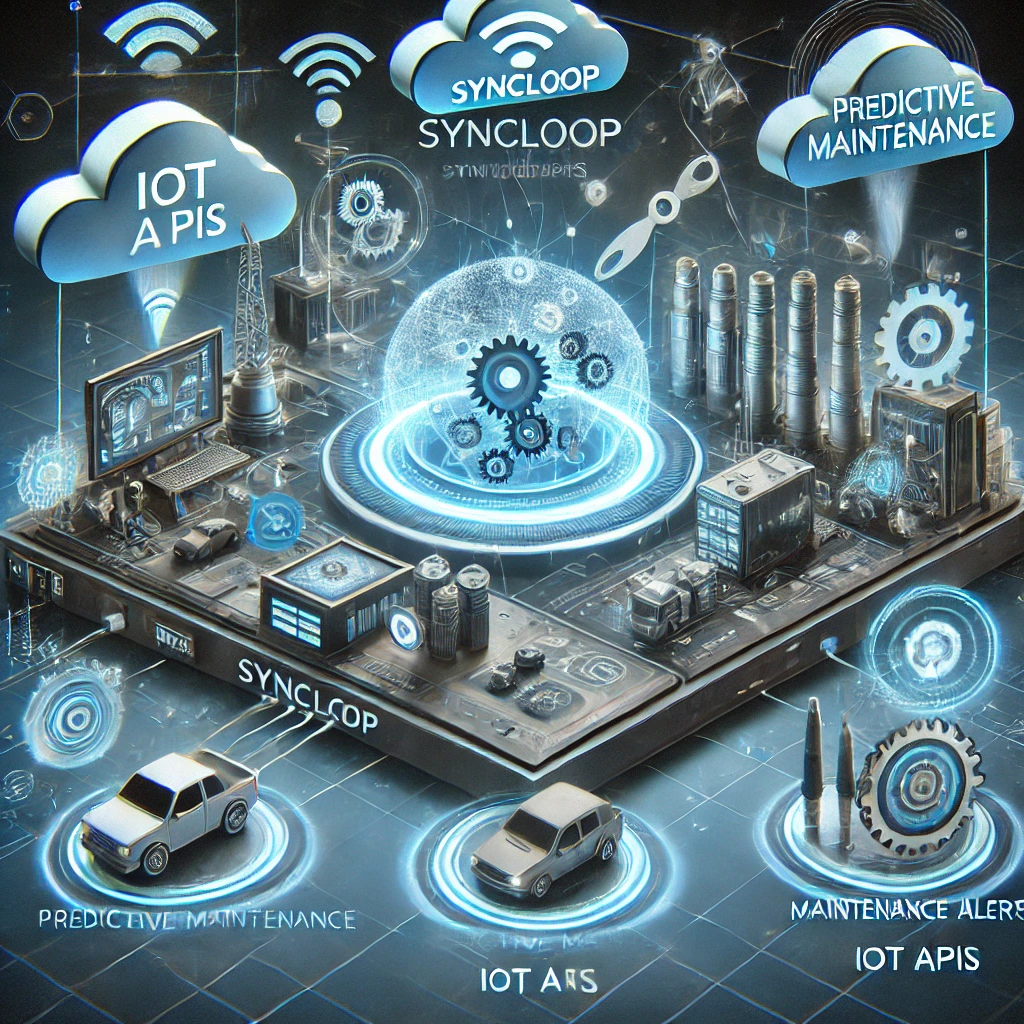Using Syncloop for Predictive Maintenance in IoT APIs

This blog explores how Syncloop simplifies the implementation of predictive maintenance in IoT APIs, enhancing system reliability and reducing downtime.
What is Predictive Maintenance?
Predictive maintenance involves using real-time data and analytics to predict when equipment is likely to fail, allowing for proactive interventions. Key benefits include:
- Reduced Downtime: Prevents unexpected equipment failures.
- Cost Efficiency: Minimizes maintenance costs by avoiding unnecessary servicing.
- Enhanced Safety: Reduces risks associated with sudden malfunctions.
- Optimized Asset Lifespan: Extends the usable life of machinery and devices.
Challenges in Implementing Predictive Maintenance with IoT APIs
- Data Integration: Connecting diverse IoT devices and systems.
- Real-Time Processing: Analyzing large volumes of data with minimal latency.
- Scalability: Managing increasing numbers of devices and data points.
- Security: Protecting sensitive IoT data from unauthorized access.
- Reliability: Ensuring consistent and uninterrupted data transmission.
How Syncloop Supports Predictive Maintenance in IoT APIs
1. Seamless IoT Device Integration
Syncloop simplifies the integration of IoT devices into predictive maintenance systems.
- Features:
- Pre-built connectors for common IoT protocols like MQTT, CoAP, and HTTP.
- Data transformation tools for standardizing device outputs.
- Benefits:
- Reduces development time for integrating diverse IoT devices.
- Ensures compatibility across heterogeneous systems.
- Use Case: Connecting industrial sensors to a centralized analytics platform.
2. Real-Time Data Streaming
Syncloop enables efficient real-time data transmission from IoT devices.
- Features:
- Support for WebSocket APIs for continuous data flow.
- Event-driven architecture for instant data processing.
- Benefits:
- Minimizes latency for time-sensitive applications.
- Ensures accurate and timely predictive insights.
- Use Case: Streaming temperature and vibration data for real-time analysis of manufacturing equipment.
3. Scalable Infrastructure
Syncloop ensures that predictive maintenance systems can handle growing data and device volumes.
- Features:
- Auto-scaling to accommodate fluctuations in data traffic.
- Load balancing for even distribution of API requests.
- Benefits:
- Maintains performance during peak usage.
- Adapts seamlessly to the addition of new devices.
- Use Case: Scaling IoT APIs for a fleet management system monitoring thousands of vehicles.
4. Advanced Analytics Integration
Syncloop facilitates integration with machine learning models for predictive analytics.
- Features:
- API orchestration for connecting IoT data to analytics engines.
- Support for integrating AI/ML platforms like TensorFlow or AWS SageMaker.
- Benefits:
- Simplifies the deployment of predictive algorithms.
- Enhances accuracy in predicting equipment failures.
- Use Case: Leveraging machine learning to predict failure probabilities for wind turbines.
5. Secure Data Management
Syncloop enforces robust security measures to protect IoT data.
- Features:
- End-to-end encryption for secure data transmission.
- Role-based access control (RBAC) for managing permissions.
- Benefits:
- Protects sensitive operational data from unauthorized access.
- Ensures compliance with industry security standards.
- Use Case: Securing real-time data transmission from IoT devices in a smart factory.
6. Monitoring and Alerting
Syncloop provides tools to monitor IoT APIs and trigger alerts for anomalies.
- Features:
- Real-time dashboards for API performance metrics.
- Configurable alerts for predefined thresholds or anomalies.
- Benefits:
- Enables proactive issue resolution.
- Enhances system reliability and uptime.
- Use Case: Sending alerts to maintenance teams when sensor readings exceed safe thresholds.
Best Practices for Implementing Predictive Maintenance with Syncloop
- Standardize Data Formats: Use Syncloop’s transformation tools to ensure consistent data structures.
- Leverage Real-Time Capabilities: Implement WebSocket APIs for instant data transmission and analysis.
- Plan for Scalability: Configure auto-scaling to accommodate growing IoT networks.
- Secure the Ecosystem: Protect IoT data with encryption and access controls.
- Integrate Advanced Analytics: Use machine learning platforms for accurate predictions.
Real-World Applications
1. Manufacturing
- Use Case: Monitoring equipment for wear and tear using IoT sensors.
- Benefit: Reduces unplanned downtime and maintenance costs.
2. Transportation
- Use Case: Tracking vehicle performance data for fleet management.
- Benefit: Improves fleet reliability and operational efficiency.
3. Energy
- Use Case: Predicting failures in wind turbines and solar panels.
- Benefit: Enhances energy production efficiency and reduces repair costs.
4. Healthcare
- Use Case: Monitoring medical devices for early signs of failure.
- Benefit: Ensures patient safety and regulatory compliance.
5. Agriculture
- Use Case: Analyzing sensor data from farming equipment to predict failures.
- Benefit: Optimizes equipment usage and reduces costs.
The Future of Predictive Maintenance with Syncloop
Syncloop is advancing its platform with:
- AI-Powered Analytics: Enhancing predictive capabilities with advanced machine learning models.
- Edge Computing: Reducing latency by processing data closer to IoT devices.
- Blockchain Integration: Ensuring data integrity and traceability for critical maintenance systems.
Conclusion
Predictive maintenance powered by IoT APIs is transforming industries by reducing downtime, cutting costs, and enhancing operational efficiency. Syncloop simplifies the implementation of these solutions with tools for seamless device integration, real-time data processing, and advanced analytics.
By leveraging Syncloop, businesses can build robust, scalable, and secure predictive maintenance systems, driving innovation and competitiveness in their respective industries.
An illustration of Syncloop-powered predictive maintenance, showcasing IoT device integration, real-time data streaming, and machine learning analytics for failure prediction.
Back to Blogs